Mohammad Ridwan Kabir
Systems and Software Lab, Department of Computer Science and Engineering, Islamic University of Technology
Two Decades of Bengali Handwritten Digit Recognition: A Survey
Jun 05, 2022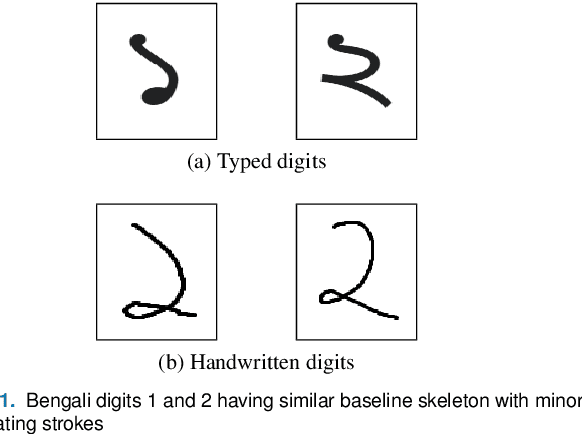
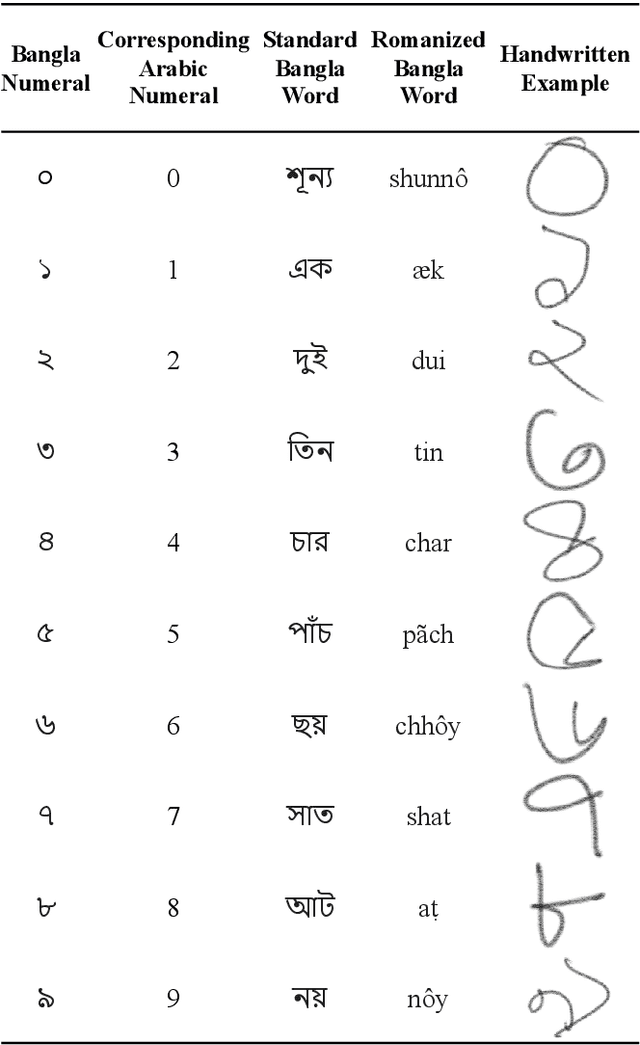
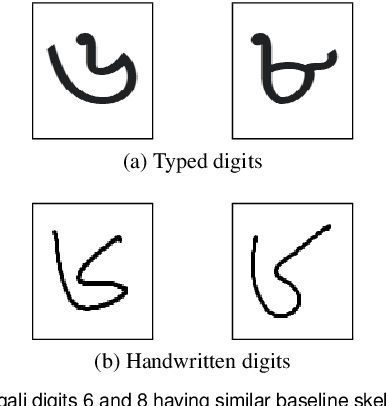

Abstract:Handwritten Digit Recognition (HDR) is one of the most challenging tasks in the domain of Optical Character Recognition (OCR). Irrespective of language, there are some inherent challenges of HDR, which mostly arise due to the variations in writing styles across individuals, writing medium and environment, inability to maintain the same strokes while writing any digit repeatedly, etc. In addition to that, the structural complexities of the digits of a particular language may lead to ambiguous scenarios of HDR. Over the years, researchers have developed numerous offline and online HDR pipelines, where different image processing techniques are combined with traditional Machine Learning (ML)-based and/or Deep Learning (DL)-based architectures. Although evidence of extensive review studies on HDR exists in the literature for languages, such as: English, Arabic, Indian, Farsi, Chinese, etc., few surveys on Bengali HDR (BHDR) can be found, which lack a comprehensive analysis of the challenges, the underlying recognition process, and possible future directions. In this paper, the characteristics and inherent ambiguities of Bengali handwritten digits along with a comprehensive insight of two decades of the state-of-the-art datasets and approaches towards offline BHDR have been analyzed. Furthermore, several real-life application-specific studies, which involve BHDR, have also been discussed in detail. This paper will also serve as a compendium for researchers interested in the science behind offline BHDR, instigating the exploration of newer avenues of relevant research that may further lead to better offline recognition of Bengali handwritten digits in different application areas.
VIS-iTrack: Visual Intention through Gaze Tracking using Low-Cost Webcam
Feb 05, 2022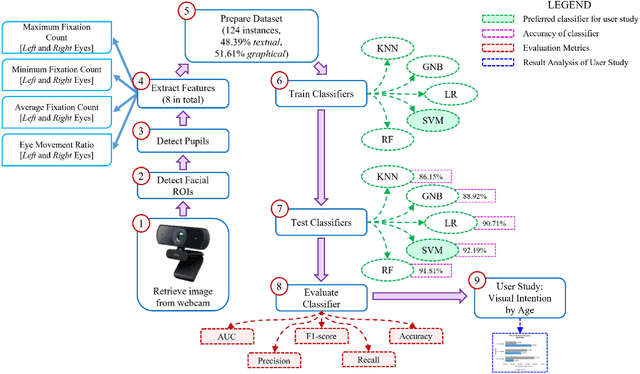
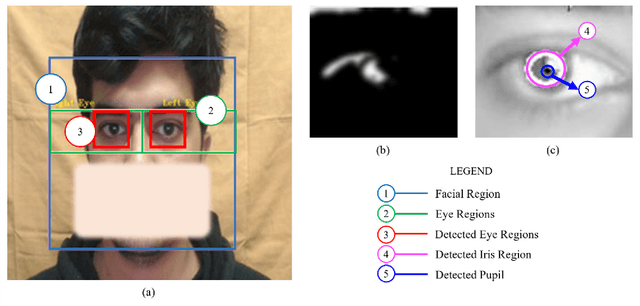


Abstract:Human intention is an internal, mental characterization for acquiring desired information. From interactive interfaces containing either textual or graphical information, intention to perceive desired information is subjective and strongly connected with eye gaze. In this work, we determine such intention by analyzing real-time eye gaze data with a low-cost regular webcam. We extracted unique features (e.g., Fixation Count, Eye Movement Ratio) from the eye gaze data of 31 participants to generate a dataset containing 124 samples of visual intention for perceiving textual or graphical information, labeled as either TEXT or IMAGE, having 48.39% and 51.61% distribution, respectively. Using this dataset, we analyzed 5 classifiers, including Support Vector Machine (SVM) (Accuracy: 92.19%). Using the trained SVM, we investigated the variation of visual intention among 30 participants, distributed in 3 age groups, and found out that young users were more leaned towards graphical contents whereas older adults felt more interested in textual ones. This finding suggests that real-time eye gaze data can be a potential source of identifying visual intention, analyzing which intention aware interactive interfaces can be designed and developed to facilitate human cognition.
Survival Prediction of Children Undergoing Hematopoietic Stem Cell Transplantation Using Different Machine Learning Classifiers by Performing Chi-squared Test and Hyper-parameter Optimization: A Retrospective Analysis
Jan 22, 2022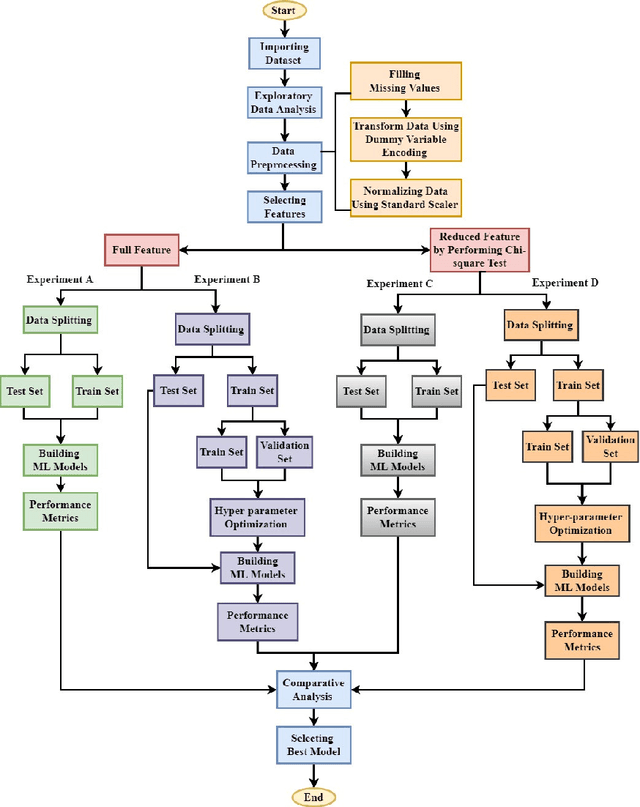



Abstract:Bone Marrow Transplant, a gradational rescue for a wide range of disorders emanating from the bone marrow, is an efficacious surgical treatment. Several risk factors, such as post-transplant illnesses, new malignancies, and even organ damage, can impair long-term survival. Therefore, technologies like Machine Learning are deployed for investigating the survival prediction of BMT receivers along with the influences that limit their resilience. In this study, an efficient survival classification model is presented in a comprehensive manner, incorporating the Chi-squared feature selection method to address the dimensionality problem and Hyper Parameter Optimization (HPO) to increase accuracy. A synthetic dataset is generated by imputing the missing values, transforming the data using dummy variable encoding, and compressing the dataset from 59 features to the 11 most correlated features using Chi-squared feature selection. The dataset was split into train and test sets at a ratio of 80:20, and the hyperparameters were optimized using Grid Search Cross-Validation. Several supervised ML methods were trained in this regard, like Decision Tree, Random Forest, Logistic Regression, K-Nearest Neighbors, Gradient Boosting Classifier, Ada Boost, and XG Boost. The simulations have been performed for both the default and optimized hyperparameters by using the original and reduced synthetic dataset. After ranking the features using the Chi-squared test, it was observed that the top 11 features with HPO, resulted in the same accuracy of prediction (94.73%) as the entire dataset with default parameters. Moreover, this approach requires less time and resources for predicting the survivability of children undergoing BMT. Hence, the proposed approach may aid in the development of a computer-aided diagnostic system with satisfactory accuracy and minimal computation time by utilizing medical data records.
 Add to Chrome
Add to Chrome Add to Firefox
Add to Firefox Add to Edge
Add to Edge